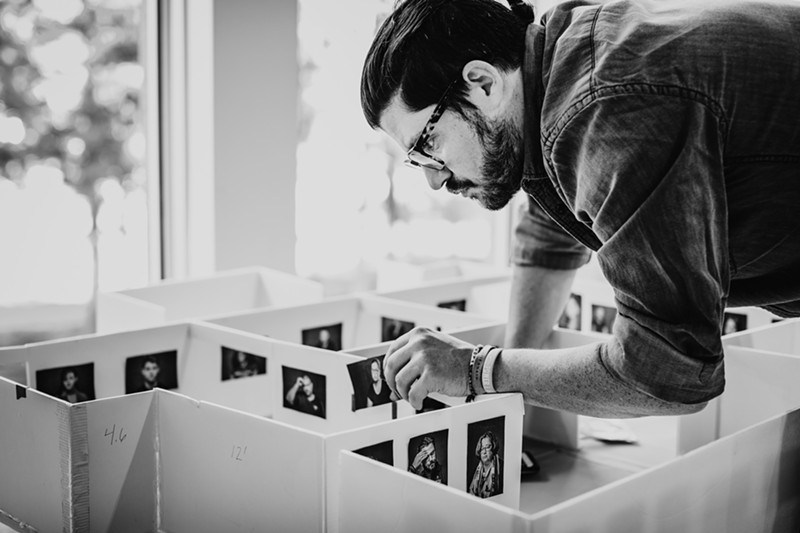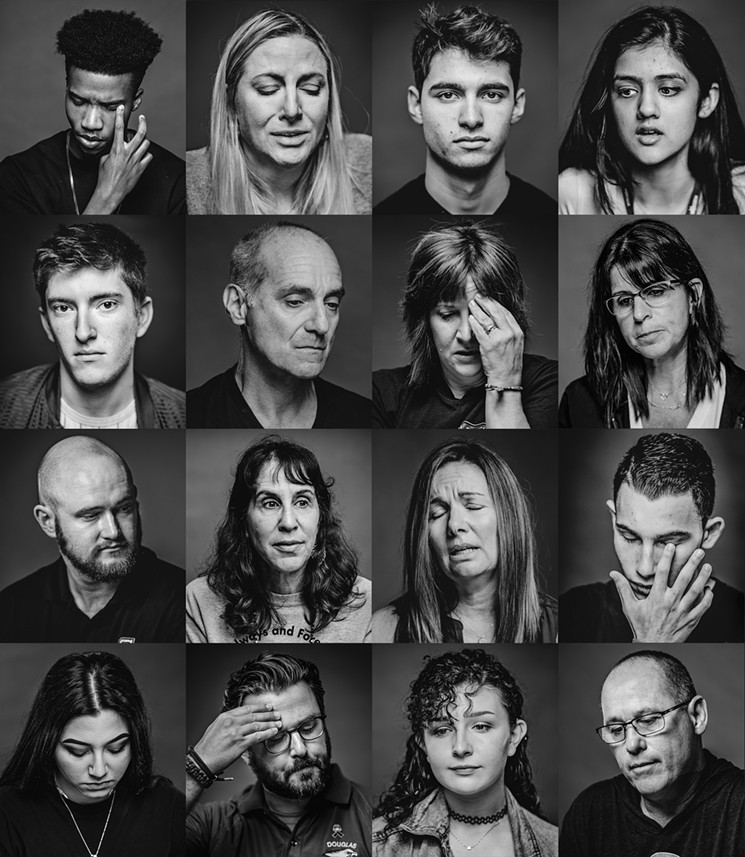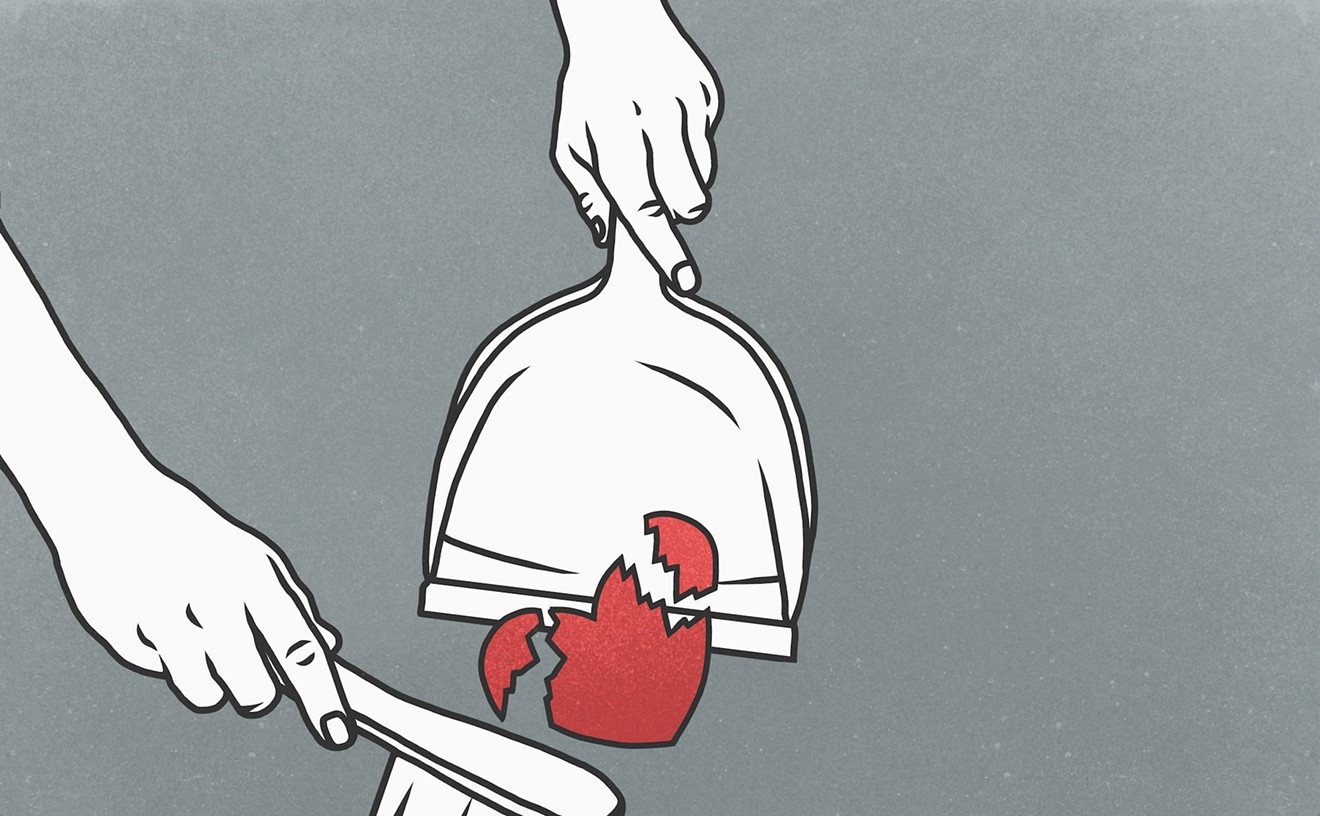February 14, 2018, was meant to be a Valentine's Day like any other for the students of Marjory Stoneman Douglas High School. Instead, a day that's meant to celebrate love in all of its iterations became forever entwined with scenes of horror.
That fateful day, former MSD student Nikolas Cruz gunned down 17 people — 14 students and three teachers — at the Parkland high school. As soon as news of the travesty spread, photographer Ian Witlen — whose work has appeared on CNN and in New Times, Time, and other publications — was called to document the scene outside the high school, his alma mater.
"As you cover these [events], you become desensitized," Witlen tells New Times. "With these heavy things, you are taught to compartmentalize and just document it. Now, I just get sent to a school shooting where I went to high school. It is a situation I have never experienced before."
“I saw a lot of students and teachers asking to be interviewed because they felt they didn’t have a voice.”
tweet this
Witlen continued to document memorials, vigils, and other gatherings of survivors and their families throughout the year following the shooting. He says teachers and students often asked for a space to tell their stories without a political bent: News media had become more interested in covering the political stories that arose out of Parkland, from the gun reform activists of the #NeverAgain movement to the conservative-aligned efforts of Andrew Pollack, the father of shooting victim Meadow Pollack.
"I saw a lot of students and teachers asking to be interviewed because they felt they didn't have a voice," Witlen says. "I kept hearing students say they didn't have an outlet. Stories that aren't political or attached to March for Our Lives weren't getting the airtime."
Witlen set out to create an outlet for survivors that would eschew politics in favor of personal accounts of that day, but he struggled to decide on an appropriate time to launch the project. "I wanted to do this project since February 15," he says, "[but] when is it the right time to talk about it? Do I just do it, or do I wait? I went and saw a PTSD specialist to make sure I don't retraumatize the victims."
In May 2018, Witlen began interviewing and photographing more than 75 teachers and students, some of whom were in the building where the shooting took place, as well as six of the 17 victims' families. Individuals were asked the same two questions: "What was your experience that day?" and "What would you like to see come of it?" He photographed the survivors as they responded to the questions, capturing their emotions in each image.
He also recorded audio of the conversations, which include emotional, previously unheard testimony about where each individual — parent, teacher, or student — was that day. Some interviews span as long as two hours, but Witlen edited them to specific moments that accompany each 30-by-40-inch portrait.
"What you will hear overall are narratives of what they have gone through," he says. "They all have a unique perspective. [It's] the same act of terror, but [each] experienced it in a different way. Some talk about how they were trapped or when they found out [what was happening]."
Throughout the creation of the project, he continued to consult with the PTSD specialist, who said Witlen was likely giving survivors much-needed license to speak freely about the experience.
"He told me: 'You put the viewer in their headspace. What you are getting is what they don't tell their therapist because they are scared they would be judged by the professional,'" Witlen says. "One of the victims said to me a weight had been lifted and she wanted to help others. She then sent others to [speak] to me."
The result of the photographer's nearly yearlong documentation is "Anguish in the Aftermath: Examining a Mass Shooting," an exhibit that will be on display at the Coral Springs Art Museum September 14 through November 9. Initially intended to present 25 pieces, the exhibit was moved to the Kuhn Gallery and expanded to include 50 pieces after the museum heard the audio paired with Witlen's portraits.
"It is not about politics. This story happened."
tweet this
"We recognized the importance and masterfulness of his work, and we realized there was great potential to assist in the healing process and... getting the information out for people who haven't heard the voices. If you haven't experienced a shooting, you don't know what that means," says Julia Andrews, executive director of the Coral Springs Museum of Art. "The exhibition is the perfect intersection of arts and humanities. It is not about politics. This story happened. It is so hard to listen and not to feel a little bit responsible. This shouldn't be happening."
Poignantly, Witlen did not use the names "Parkland" or "Marjory Stoneman Douglas" in the exhibit's title in an effort to shed light on the prevalence of mass shootings nationwide.
"It is not an isolated incident. It continues to happen, so I wanted to create a body of work for everyone who experienced something like this as a way to remove politics and put people into their headspace. It helps people understand what they have gone through," he says. "What people do with this information is their choice. They can be touched and look to create change. I hope people will learn something from this and hope it doesn't happen again."
Much like the survivors included in "Anguish in the Aftermath," museum visitors will get a chance to voice their thoughts about the tragedy and the macro trend of gun violence after they walk through the exhibit. Visitors will be asked to answer the second question Witlen posed to survivors on Post-it notes.
Witlen is hoping the discussion reaches far beyond Parkland and Coral Springs. He hopes the project will evolve and be used for educational purposes across the nation. He's already in talks to show the exhibit at other South Florida galleries.
"You think it won’t happen in your community. This proves it can happen anywhere."
tweet this
Additionally, the Florida Humanities Council gave the photographer two 32-inch LED touchscreen computer kiosks to display the portraits of 60 of the project's participants, paired with audio and transcription. The kiosks will first be housed at the museum and will eventually be sent to low-population communities without access to humanities projects like this one.
"This is meant for other communities," Witlen says. "You think it won't happen in your community. This proves it can happen anywhere."
Anguish in the Aftermath: Examining a Mass Shooting. September 14 through November 9, Coral Springs Museum of Art, 2855A Coral Springs Dr., Coral Springs; 954-340-5000; coralspringsmuseum.org/ian-witlen. Museum admission costs $6; various discounts are available.









